
This post may contain affiliate links. See my full disclosure. As an Amazon Associate, I earn from qualifying purchases.
If you’re a fan of cinnamon raisin bread, you’ll have to try this sourdough version. Soft, lightly sweetened, and cinnamon-swirled with plump, vanilla-soaked raisins–all with the flavor and benefits of a long fermentation. Serve it warm, toasted and buttered, or made into French toast.
*Updated 3/14/24

My kids’ eyes light up when I tell them we’re having sourdough cinnamon raisin bread for breakfast!
This bread is nice and soft with the slightest bit of chewiness. The texture contrasts nicely with a beautiful swirl of cinnamon sugar and raisins.
I soak the raisins in water and vanilla extract ahead of time to make them plump and flavorful before pressing them into the dough.
The cinnamon sugar swirl stays in place thanks to the addition of flour and egg wash (a trick I learned from King Arthur Baking).
The crust bakes up to a lovely golden brown color. I brush the crust with melted butter right out of the oven for added shine and softness.
You’ll find a printable recipe card at the end of this post. You can easily double the recipe to make two loaves at once. It freezes very well!
Why leaven cinnamon raisin bread with sourdough starter?
I love to leaven all my breads with my sourdough starter. (Just check out my recipes for Homemade Sourdough Croissants, Sourdough Danish Pastries, or Soft Sourdough Potato Rolls.)
Naturally leavened bread is lower glycemic index and easier to digest than bread made with commercial yeast. It’s higher in antioxidants and acts as a prebiotic to help feed beneficial bacteria in the gut.
It’s also lower in gluten and has more bio-available nutrition. (Source)
Beyond the nutritional benefits, the sourdough starter adds a welcome complex flavor to this white flour loaf, though the bread really isn’t very sour at all.
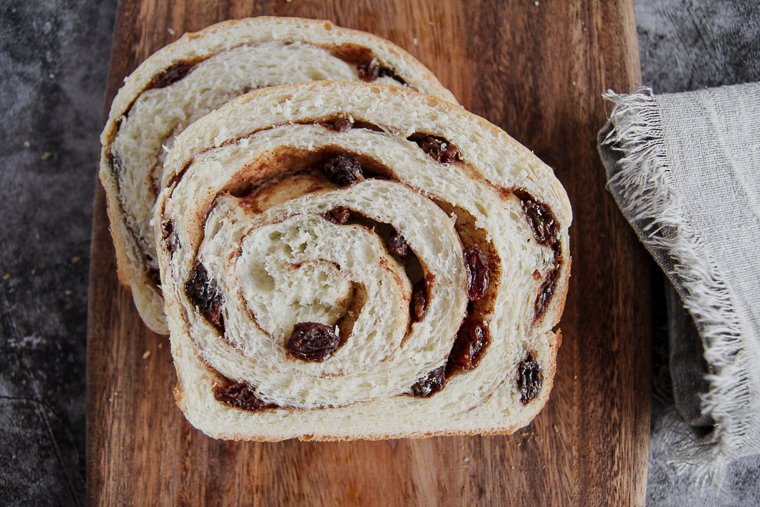
Why refrigerate the sourdough cinnamon raisin bread dough overnight?
With this sourdough recipe, I do the first part of the bulk ferment at a warm room temperature to give the dough a head start. Then I let the dough cold ferment overnight in the refrigerator.
The cold ferment gives the dough time to develop a more complex flavor, and it’s easier to shape the swirled loaf when the dough is cold.
I also like how I can easily work the sourdough-baking process around my schedule, starting the dough the first day and finishing the process the next.

You can easily keep the dough refrigerated for up to three days, but the flavor will become more sour the longer it sits.
If you would prefer, though, you can do the entire bulk ferment at room temperature.
You can start the dough in the morning and shape it about 8 hours later. Proof and bake, and finish the same day.
Tips for Making This Sourdough Cinnamon Raisin Bread Recipe
- Use a well-established starter for this recipe. Feed the starter ahead of time and mix the dough as soon as the starter reaches its peak.
- Although I list the ingredients in both cup measurements and grams, I highly recommend you weigh the ingredients for the best result.
- Use the time-frames as a guide, but ultimately watch the dough to know when to progress to the next step.
- Use all-purpose flour if bread flour is not available, but decrease the amount of milk slightly.
Recommended Equipment
- Digital kitchen scale (this one is my favorite, but any one will work)
- Mixer fitted with a dough hook (I love my Bosch Universal Plus for bread, and I use my dough hook extender when making only one loaf at a time)
- USA 1lb loaf pan (I’ve been slowly switching all my baking pans over to this brand.)
- Pastry brush
- Instant-read thermometer to doneness (this one is my favorite)
- Cooling rack
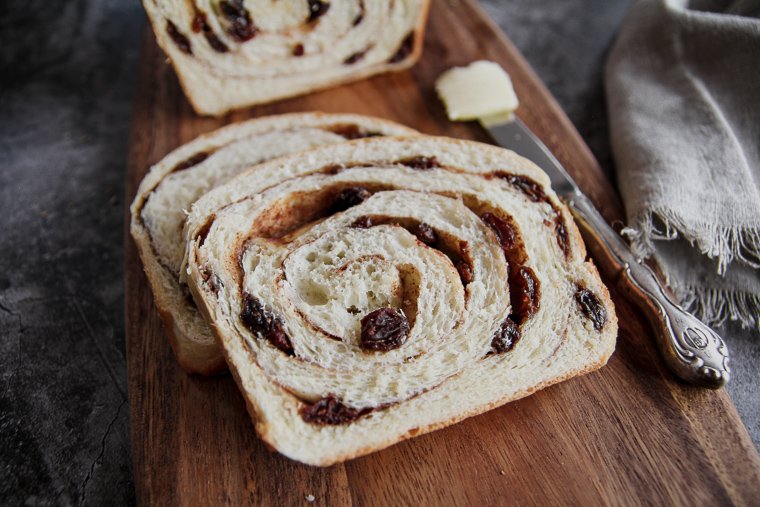
How to Make Sourdough Cinnamon Raisin Bread (Step-by-Step Instructions)
Step 1 – Mix the Dough
I recommend you weigh the dough ingredients for consistency, but I’ve included cup measurements as well.
We’ll start by adding the active starter, whole milk, beaten egg, sugar, salt, softened butter, and 374g of bread flour to the bowl of a stand mixer fitted with a dough hook.
Mix on low speed for a couple of minutes until the dough comes together.
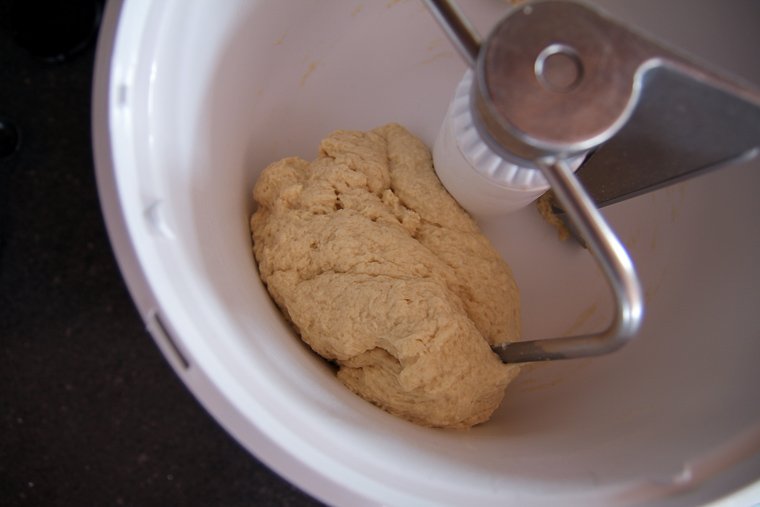
If the dough is still sticking to the bottom and sides of the bowl, you can add an additional 1/8 cup (17g) flour.
Keep in mind the dough should be quite tacky. It will become less sticky after kneading.
Knead the dough on low speed for 8-10 minutes to develop the gluten.
The dough should look very smooth and pass the windowpane test. This means if you stretch it gently with wet fingers, you can stretch it far enough to see light through it before it tears.
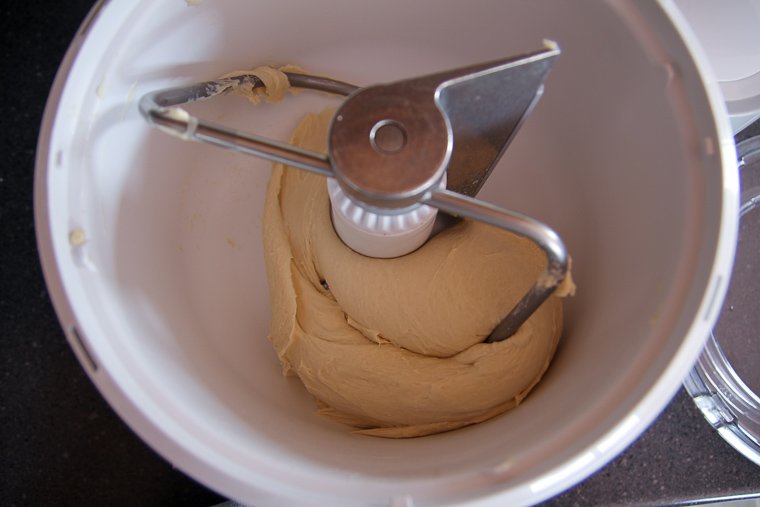
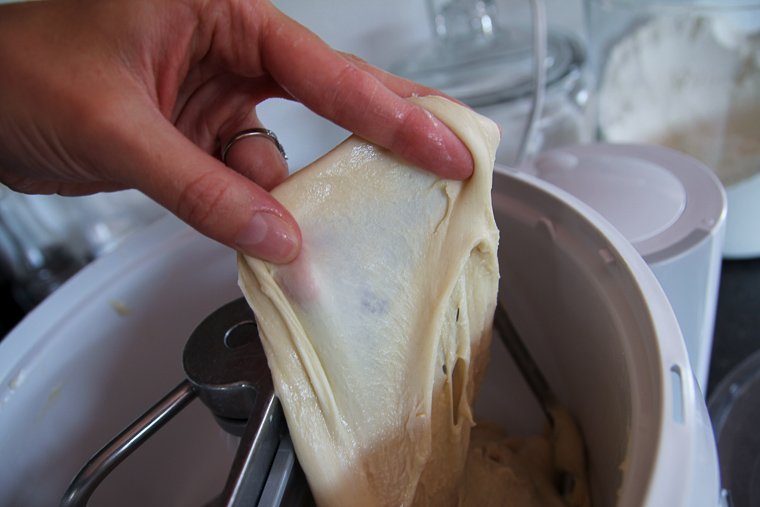
Step 2 – Bulk Ferment the Sourdough Cinnamon Raisin Bread Dough
Form your dough into a smooth ball and place it in a lightly oiled, lidded bowl.
Prop the lid on so air can still escape without the dough drying out. Allow your dough to ferment at warm room temperature for 4 hours, or until the dough is close to doubling in volume.
I like to ferment in my oven with the light on, though I’ll have to eventually have to crack the oven door so it doesn’t get too warm in there. 75-80°F is ideal.
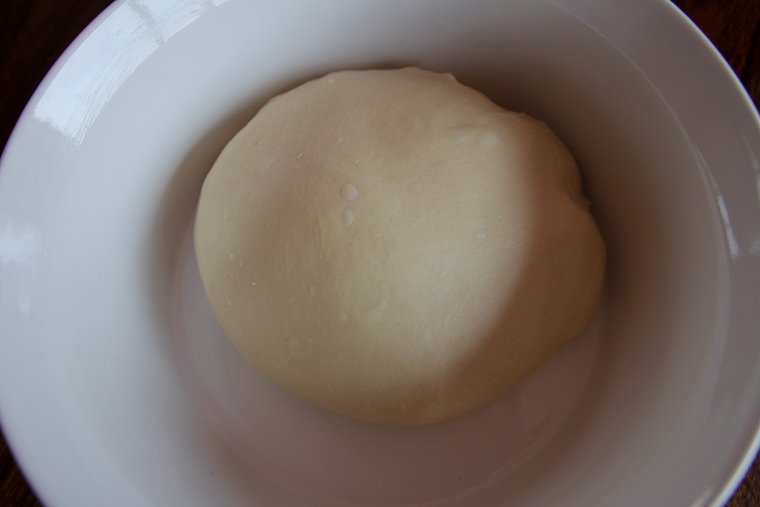

After the 4 hours is up, place your lid on securely and refrigerate overnight. You can go a day or two extra, before shaping and baking, if you would like.
At this point, the dough should have risen considerably.
(Alternately, ferment for 8 hours at room temperature, or until the dough has doubled in size. Shape, proof, and bake as normal.)
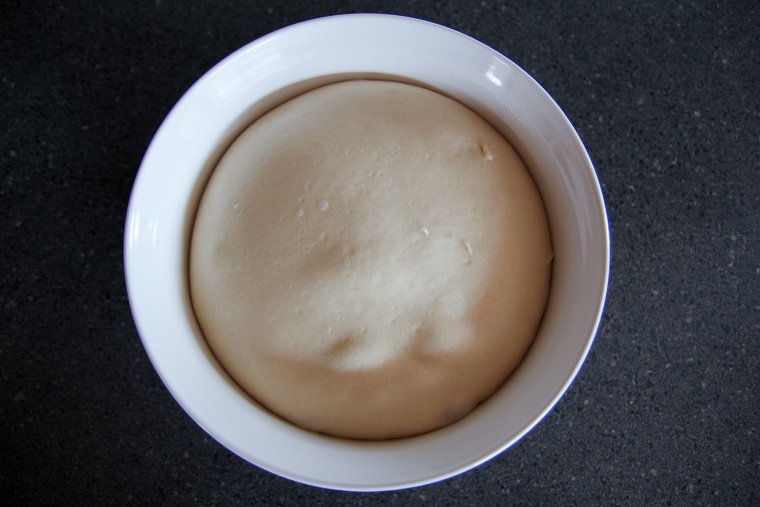
Step 3 – Soak Raisins and Prepare Filling
About an hour before you intend to bake your sourdough cinnamon raisin bread, put your raisins in a small bowl and stir in your vanilla extract and water. Set aside.
In another bowl, stir together the filling ingredients: brown sugar, cinnamon, 2 tablespoons of four, and salt. Set this aside as well.
Step 4 – Shape the Cinnamon Raisin Loaf
Remove your dough from the fridge and turn it out onto a lightly floured surface. Press it flat to degas it and form it into the shape of a rectangle with your hands.
Use a rolling pin to roll it to a 22×6-inch rectangle, making sure it isn’t sticking to your counter underneath.
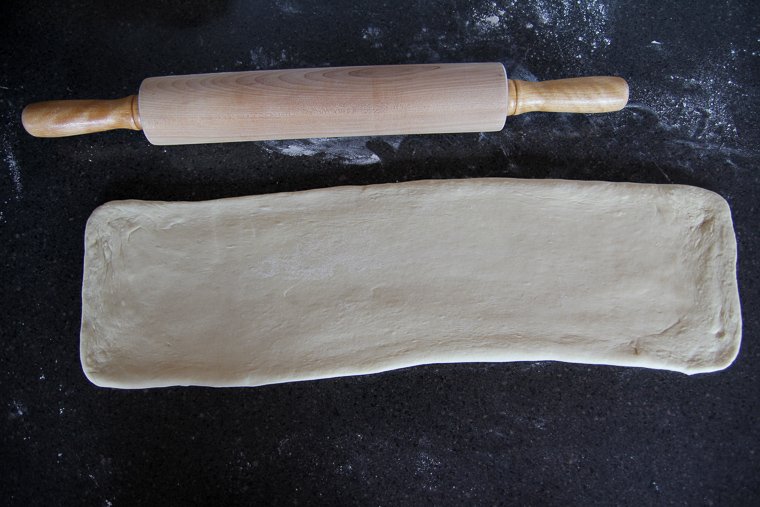
Whisk together your egg and water to make an egg wash, and brush a layer over the entire surface of your dough.
Sprinkle the brown sugar/cinnamon mixture over the egg wash. Use your hands to spread it evenly over the surface of the dough.
Distribute the soaked raisins evenly on the surface (avoid pouring any leftover liquid from the raisins on the dough) and press them into the dough with your hands.
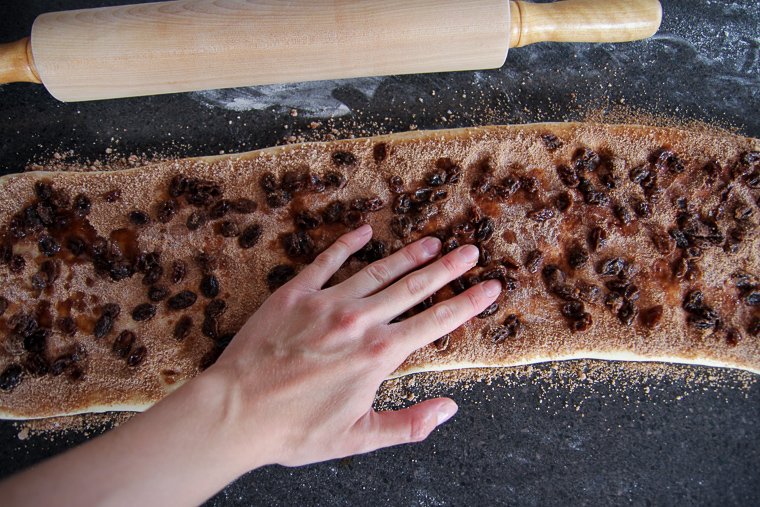
Starting from a short side of the rectangle, begin rolling the dough into a log. Roll tightly, stretching the dough slightly as you go, and make sure the edges line up.
This will create the swirl in the center of the bread.

Pinch the seam and the ends together, and place the loaf seam-side down in a buttered 9×5-inch nonstick loaf pan.

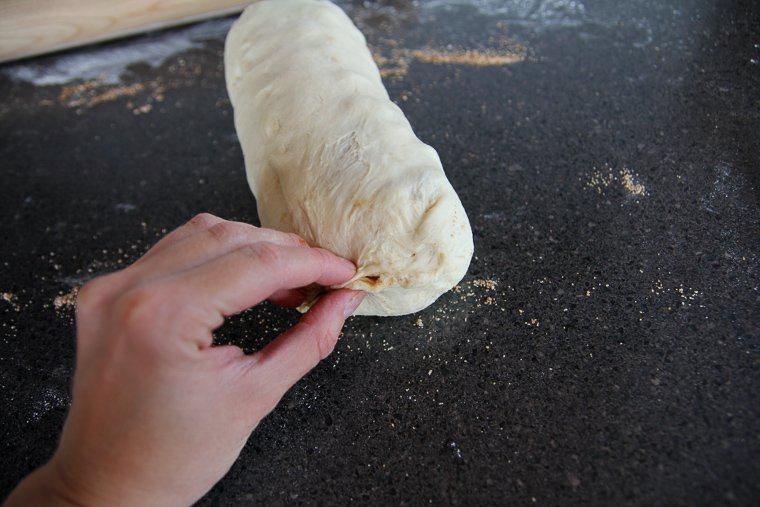
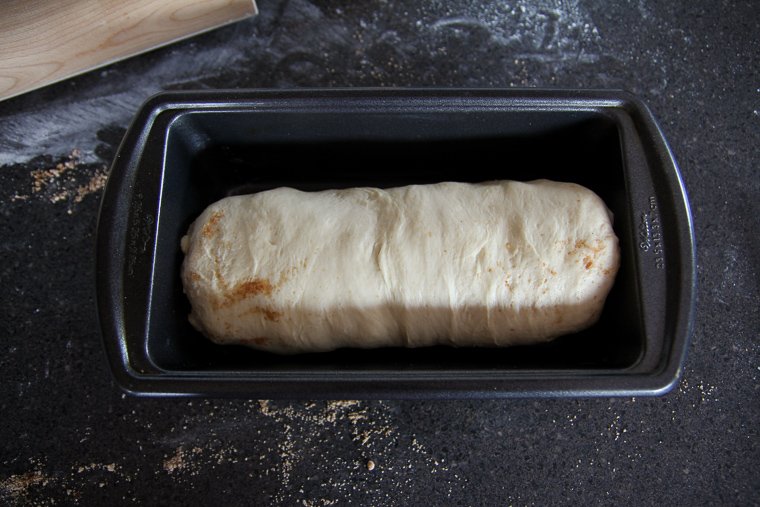
Step 5 – Proof, Bake, and Brush Loaf with Melted Butter
Cover your loaf with a tea towel and set it in a warm place to proof until it has filled the pan and passes the poke test. (Wet a finger and poke the loaf. If the indent bounces back only slightly, you’re ready to bake.)

Bake in a 350°F oven on the center rack for 20 minutes, then tent the top of the loaf with a piece of foil and bake for 15-20 more minutes until the top is golden.
When the loaf is done, carefully turn it out of the pan and place it on a cooling rack.
Use a pastry brush to coat the crust with the melted butter for a soft exterior. Allow the loaf to finish cooling before you slice into it or store it.
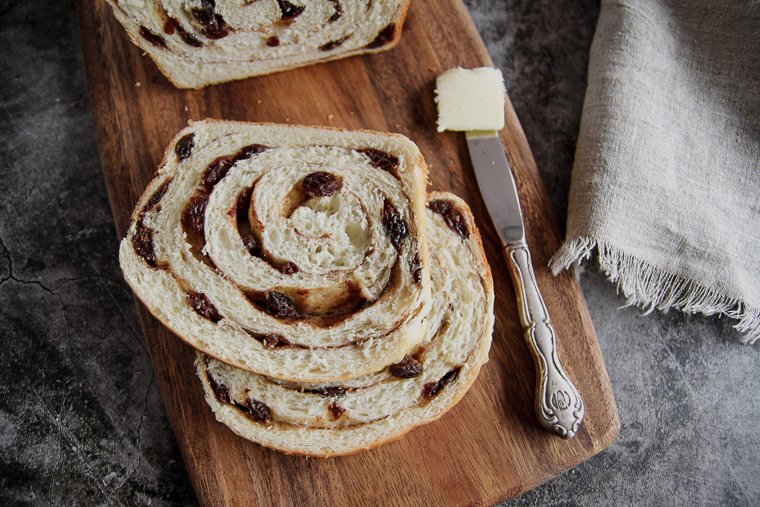
How to Store Sourdough Cinnamon Raisin Sourdough Bread
This bread will store well in an airtight container at room temperature for at least 3 days.
As I mentioned before, you can easily freeze an entire loaf, or freeze the loaf sliced. Simply leave the bread at room temperature to thaw or microwave the frozen bread briefly to thaw more quickly.
If you make this recipe and love it, I would be so grateful if you would come back to leave a star rating and a comment. Your feedback is very appreciated!
Follow me on Instagram @aberlehome and tag me on your photo to show me what you made!

Sourdough Cinnamon Raisin Bread
If you're a fan of cinnamon raisin bread, you'll have to try this sourdough version. Soft, lightly sweetened, and cinnamon-swirled with plump vanilla-soaked raisins--all with the flavor and benefits of a long fermentation. Serve it warm, toasted and buttered, or made into French toast.
Ingredients
Dough
- 1 cup (196g) active sourdough starter, 100% hydration
- 1/2 cup (123g) whole milk
- 1 egg, beaten
- 2 tablespoons (25g) sugar
- 1 teaspoon (6g) kosher salt
- 3 tablespoons salted butter, softened
- 2 3/4 cups (374g) bread flour, plus more as needed
Filling
- 3/4 cup (109g) raisins (not packed)
- 1 teaspoon pure vanilla extract
- 2 tablespoons (30g) water
- 1/4 cup (55g) packed brown sugar
- 2 teaspoons ground cinnamon
- 2 tablespoons (16g) unbleached all-purpose flour
- 1/8 teaspoon kosher salt
Egg Wash
- 1 egg
- 2 teaspoons water
For Brushing Loaf After Baking
- 1 tablespoon butter, melted
Instructions
- Mix (Day 1): Add active sourdough starter, whole milk, beaten egg, sugar, salt, softened butter, and 2-3/4 cups (374g) of bread flour to the bowl of a stand mixer fitted with a dough hook. Mix until the dough comes together. Add an additional 1/8 cup (17g) flour only if the dough is still sticking to the sides of the bowl.
- Knead: Knead for 8-10 minutes on low speed until the dough passes the windowpane test. Form into a smooth ball and place into a lightly oiled, lidded bowl.
- Bulk ferment: Prop the lid on to keep the dough from drying out and set in a warm place (75-80°F) to ferment for 4 hours or until nearly doubled in size (will take longer if your kitchen is cooler). Then place the lid on securely and refrigerate overnight (see notes for one-day schedule).
- Prepare Filling (Day 2): On baking day, an hour before shaping your loaf, mix raisins with vanilla extract and 2 tablespoons water. Set aside. In another bowl, mix together brown sugar, cinnamon, flour, and salt. Set aside.
- Shape: Turn dough out onto a lightly floured surface and roll to a 22x6-inch rectangle. Whisk together egg and 2 teaspoons water to make an egg wash. Brush over the entire surface of your dough. Sprinkle on the brown sugar/cinnamon mixture and distribute it evenly with your hands. Drain raisins, then distribute them evenly over the cinnamon sugar. Press them down into the dough with your hands.
- Starting from a short side of the rectangle, begin rolling your dough into a log. Roll tightly, stretching slightly as you go, and try to keep the side edges aligned. Pinch the seam and the ends of the log closed. Place the loaf seam-side down in a buttered 9x5-inch (1lb) loaf pan.
- Proof: Cover loaf with a tea towel and place in a warm spot to proof until the loaf fills the pan and feels soft to the touch. The dough should pass the "poke" test to spring back only slightly when poked with a damp finger. Meanwhile, preheat oven to 350°F.
- Bake: Bake on the center rack for 20 minutes, then tent the top of the loaf with foil and bake for 20 more minutes or until the internal temperature measures 190°F on an instant-read thermometer.
- Carefully remove loaf from pan and transfer to a cooling rack. Brush the exterior with melted butter while the bread is still warm. Allow to cool completely before slicing or storing.
Notes
*Alternately, ferment at room temperature for 8 hours (or until the dough has doubled in size). Shape, proof, and bake as normal.
Recommended Products
As an Amazon Associate and member of other affiliate programs, I earn from qualifying purchases.
Nutrition Information:
Yield: 10 Serving Size: 1Amount Per Serving: Calories: 323Total Fat: 7gSaturated Fat: 4gTrans Fat: 0gUnsaturated Fat: 2gCholesterol: 50mgSodium: 132mgCarbohydrates: 56gFiber: 3gSugar: 1gProtein: 9g
*Nutrition information is not always accurate.


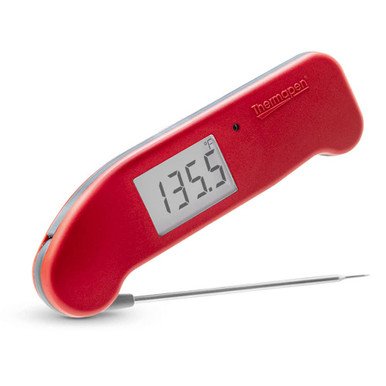





Made this for my husband today in my zojirushi. Very excellent bread. Sliced beautifully, and soft too. I didn’t use the filling though. I added some cinnamon, and added raisins after initial kneading.
I have been baking with sourdough for close to 40 years, and have a vast collection of recipes. Yours rank pretty high in the raisin bread category! Thanks
I’m so glad to hear you enjoyed the bread, Sandy! Thank you for trying my recipe.
Hello! Did you have to make any other high altitude adjustments for this? Also in Colorado so figured I’d check first 🙂
Hi Melissa! Nope, no other adjustments are necessary for high altitude with this recipe. I’d just watch the dough in case it ferments at a different speed for you.
In general, how long will the second proof take?
Mine took a solid 3-1/2 hours at 80°F, which is to be expected for a sourdough that came out of the fridge.
I appreciate your feedback, Alan!
Thanks for sharing, normally I make changes to a recipe before I even try them. But your recipe, is great and I did not change a thing.
Really tasty and just the right amount of raisins and cinnamon.
I will be making this again soon.
Best, Greg
So happy to hear that, Greg! Thank you for trying the recipe!
The outside of my dough was really hard and crunchy like traditional sourdough. I’m not sure what I did wrong though. It taste delicious. The inside is a little dry as well. Good my dog have been to dry?
Hi Danielle! It’s possible that your dough was too dry. You could try holding back some of the flour next time. I’m also wondering if you proofed the loaf long enough before baking. Sometimes the crust can get thick when the dough hasn’t fermented enough. I hope it turns out better next time! 🙂
Thankyou so much I too prefer to do a long cold ferment because of my schedule as well. Mixing it up now can’t wait!
I hope you love it! Thanks for your comment, Sarah.